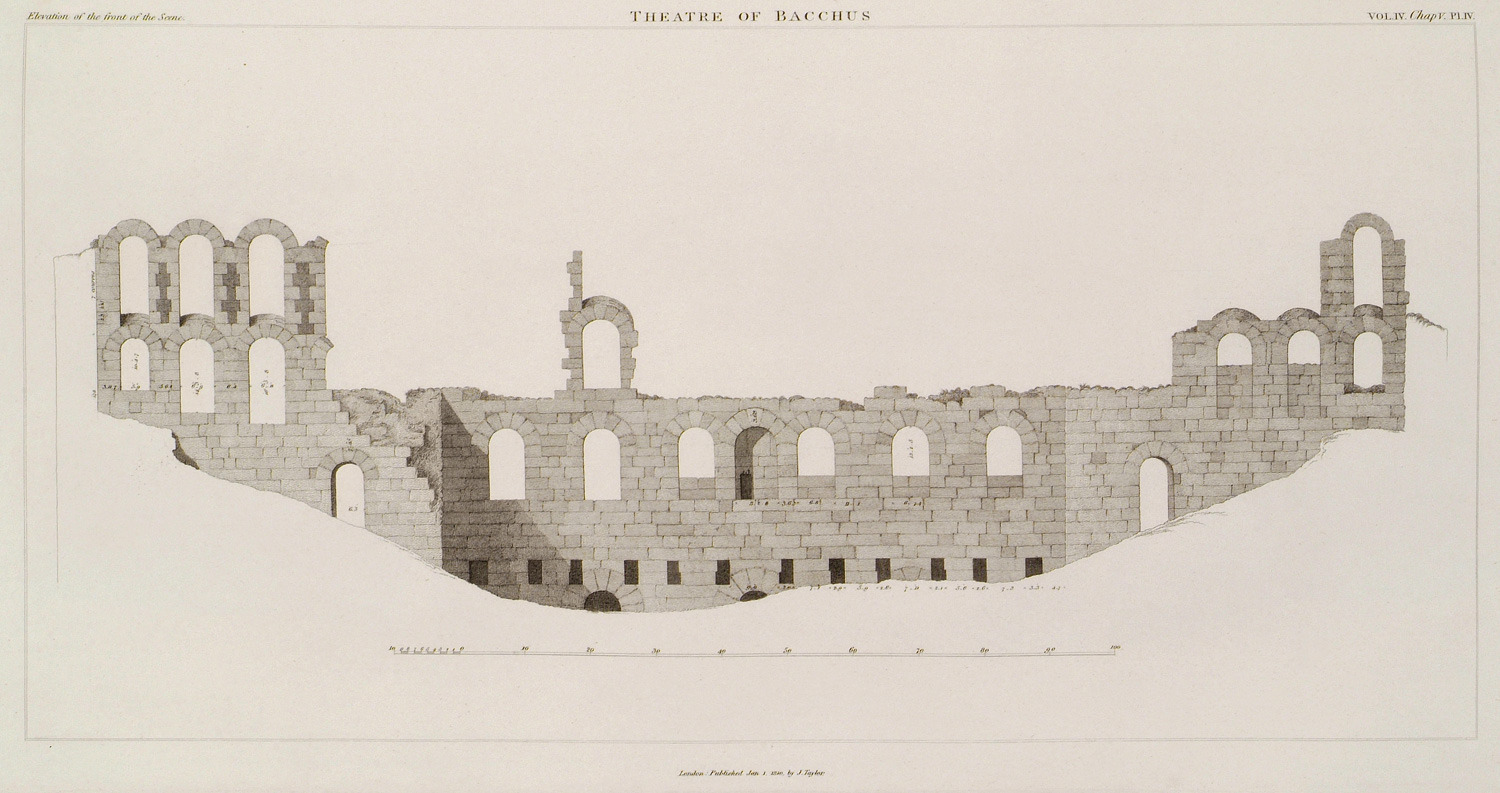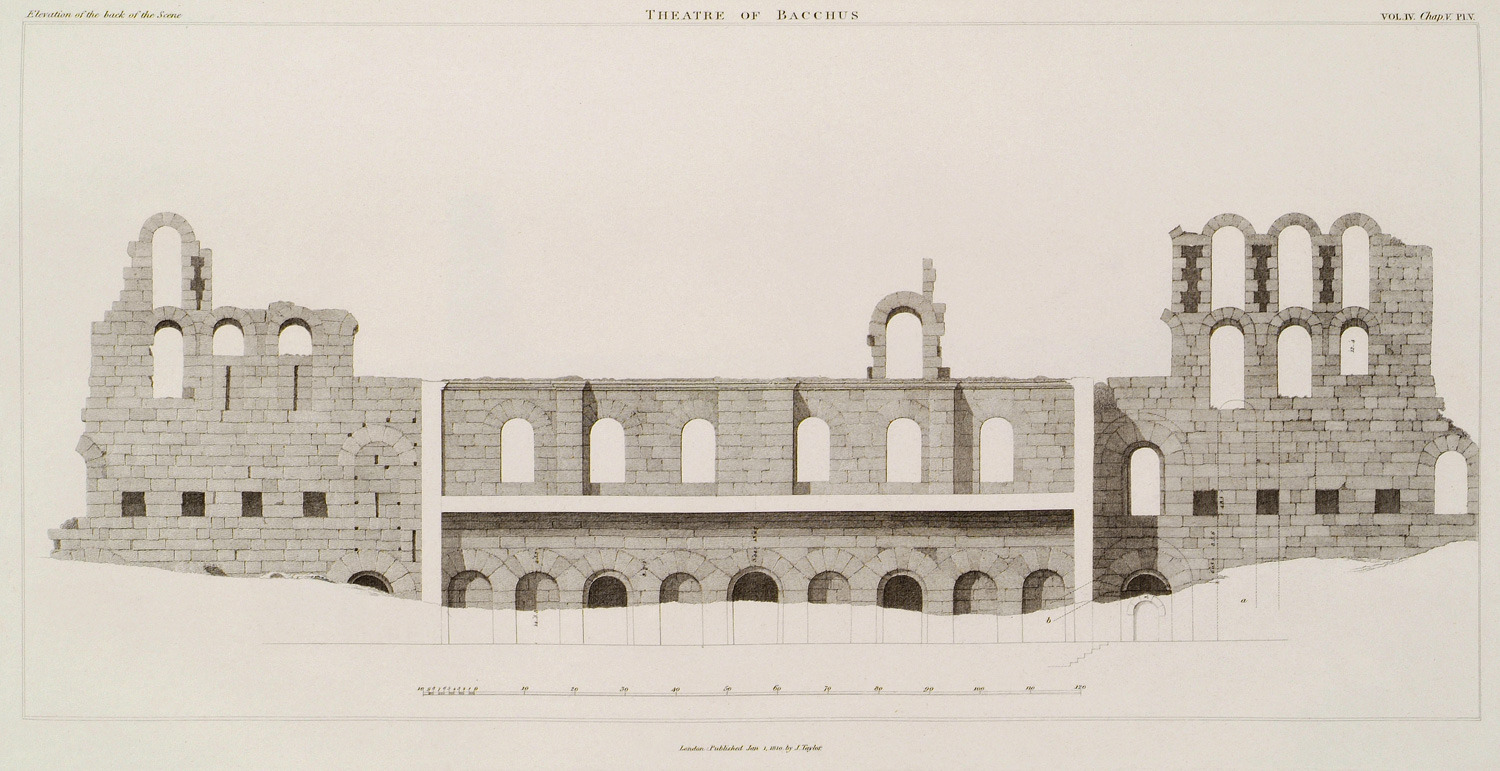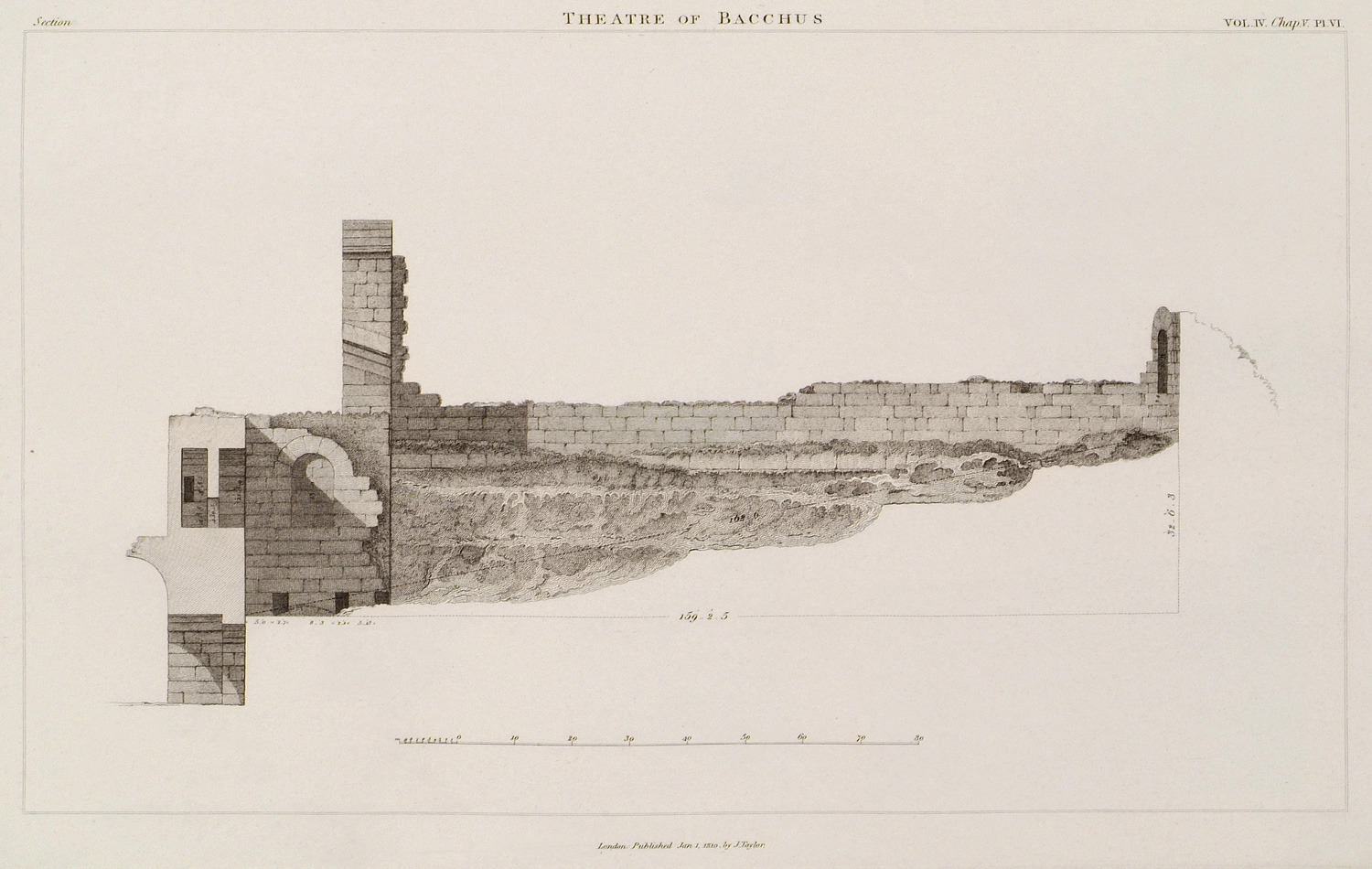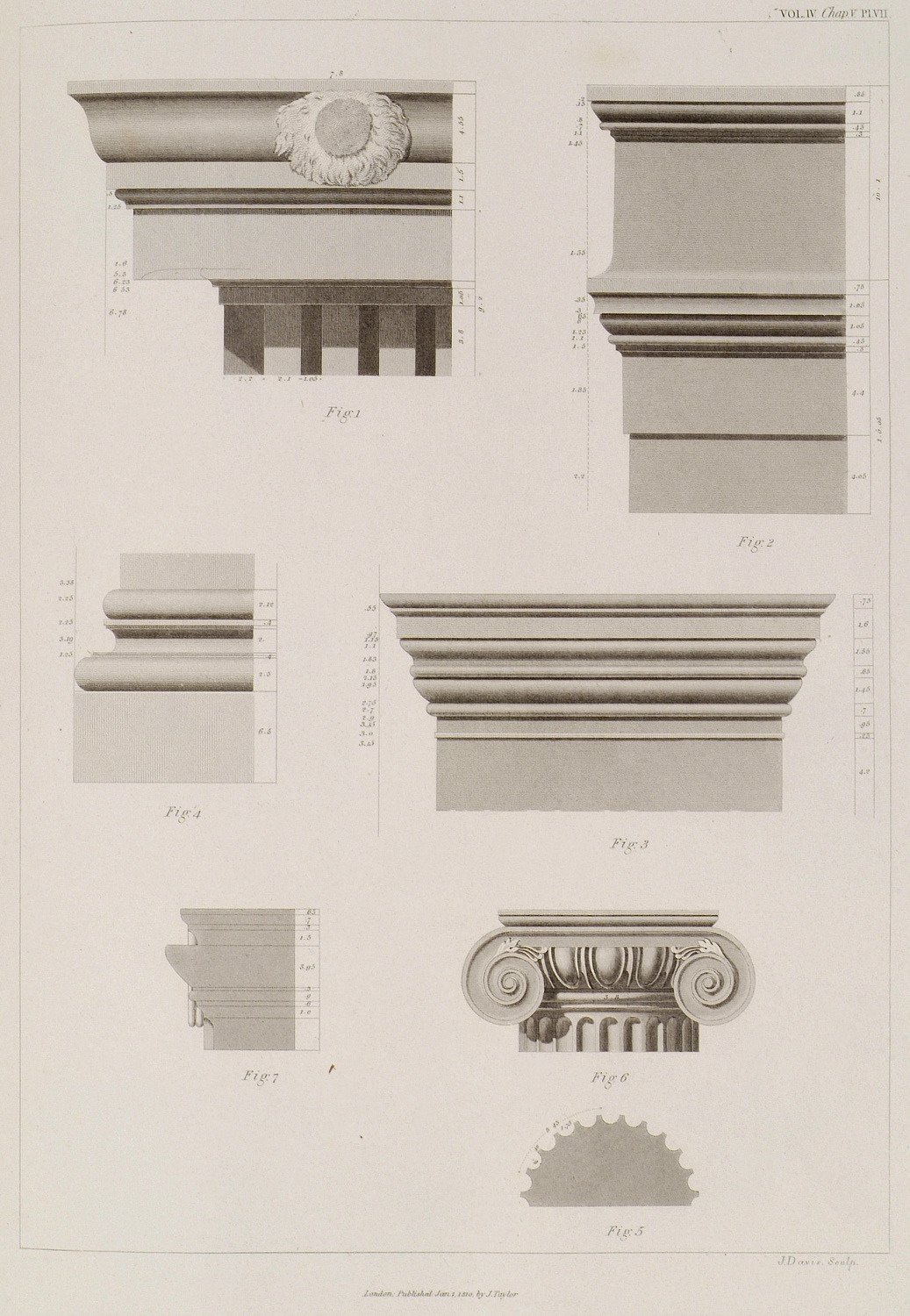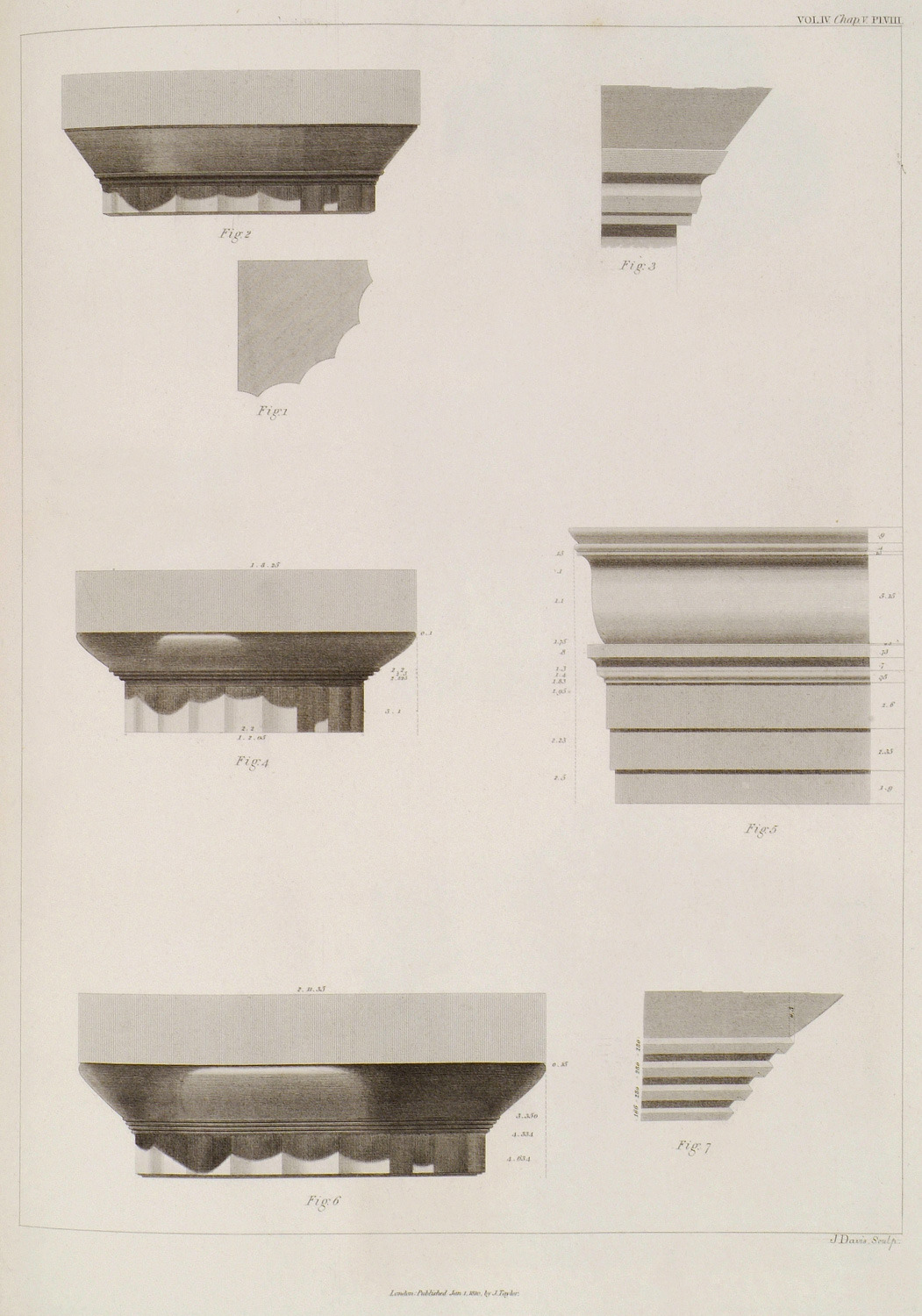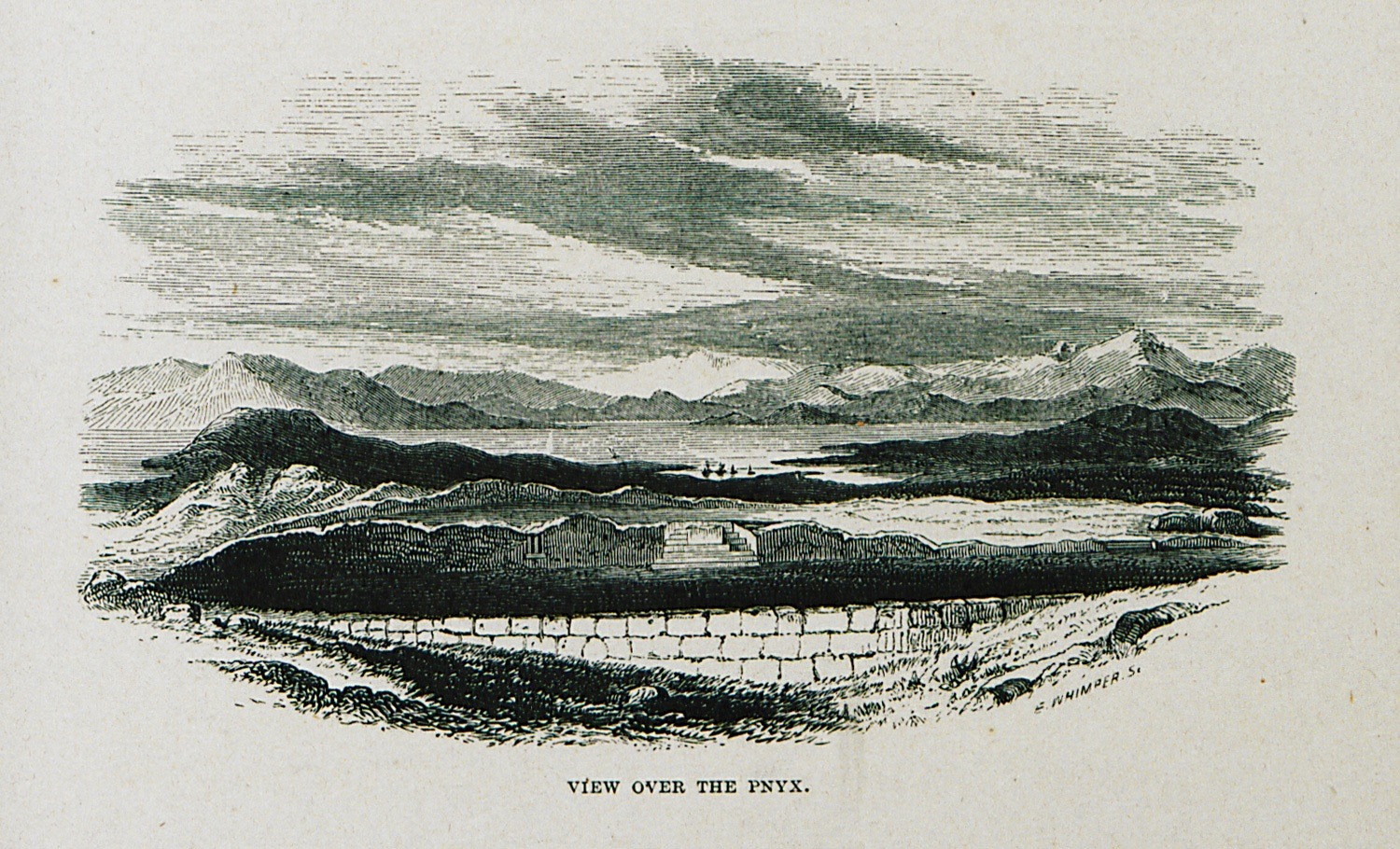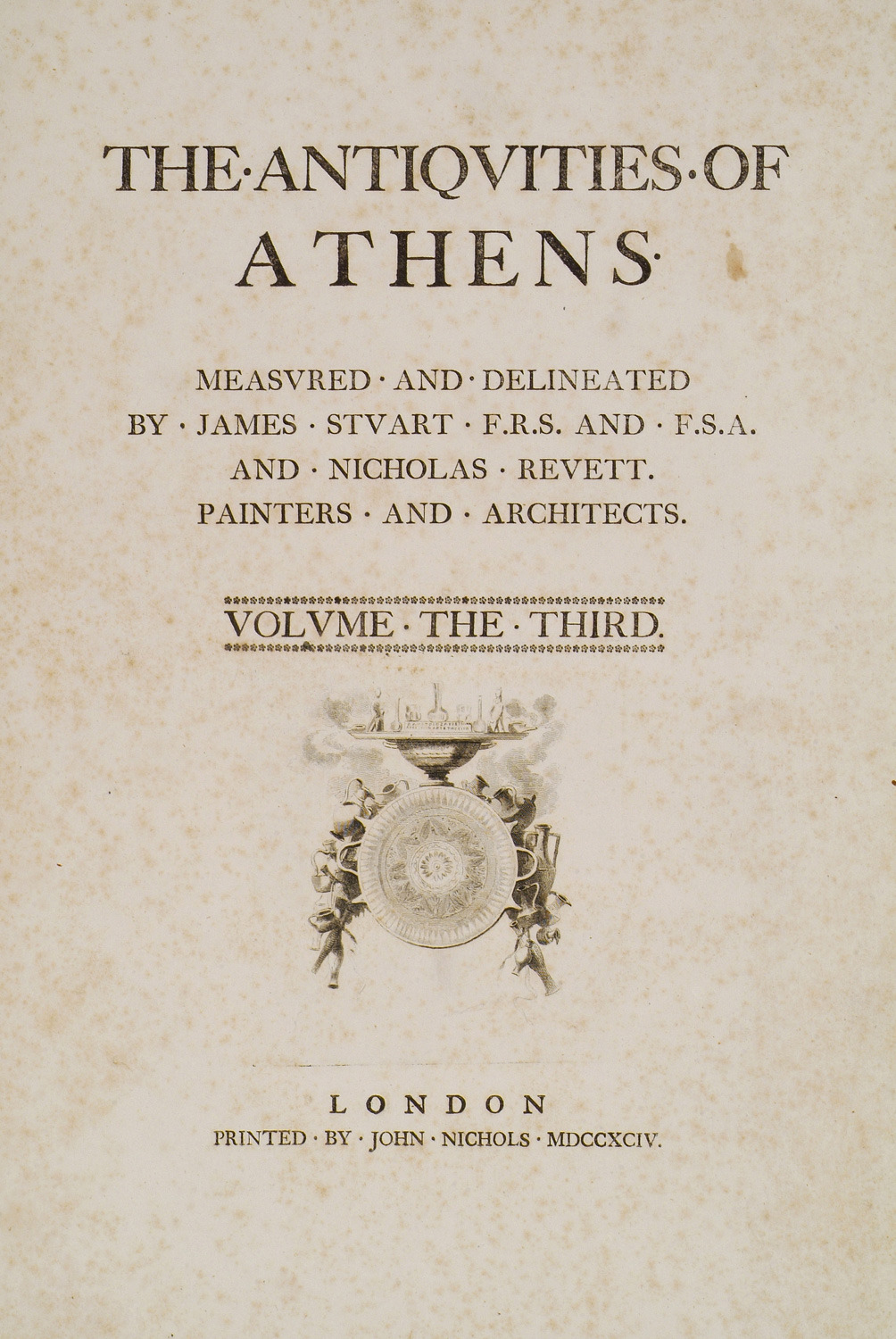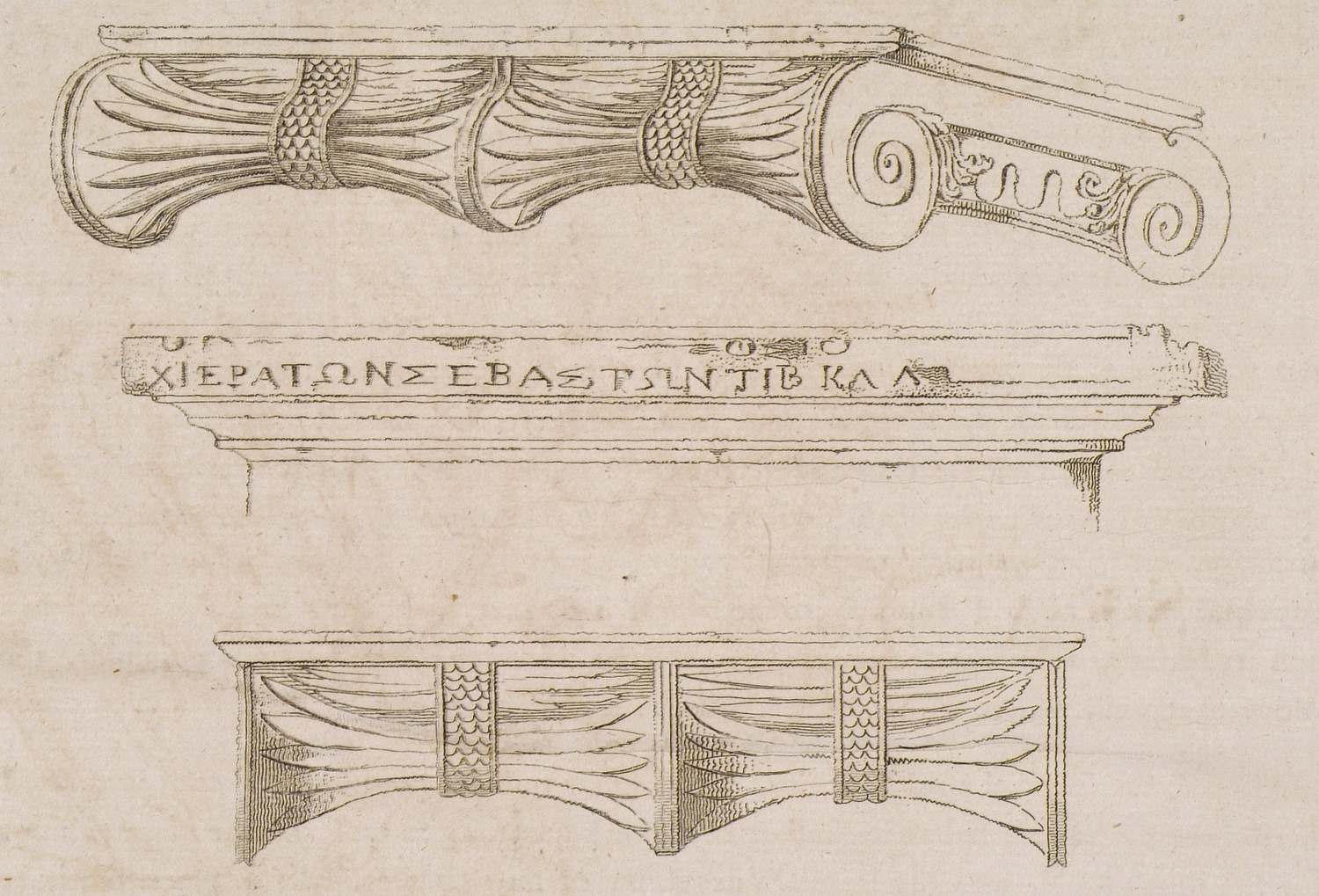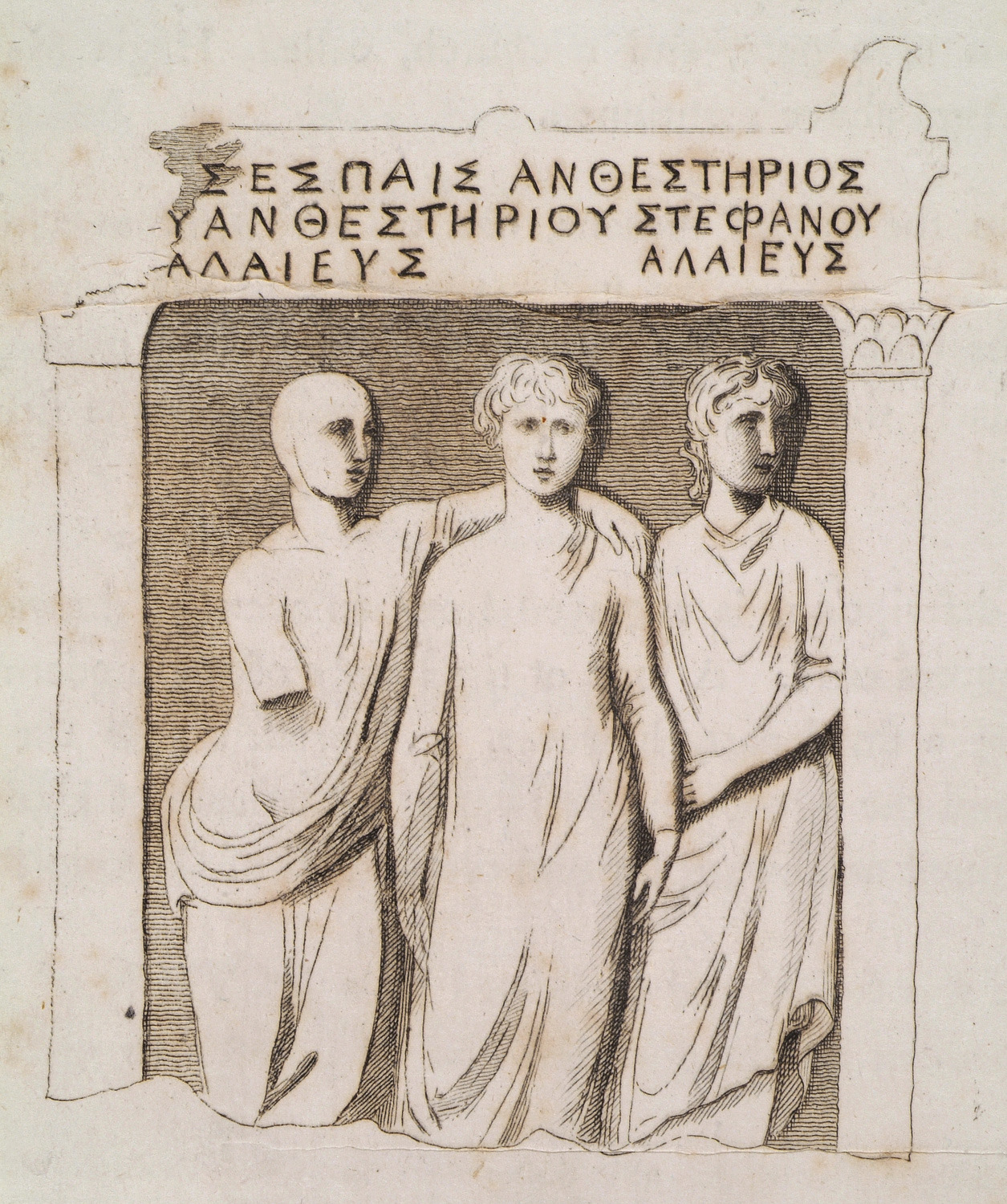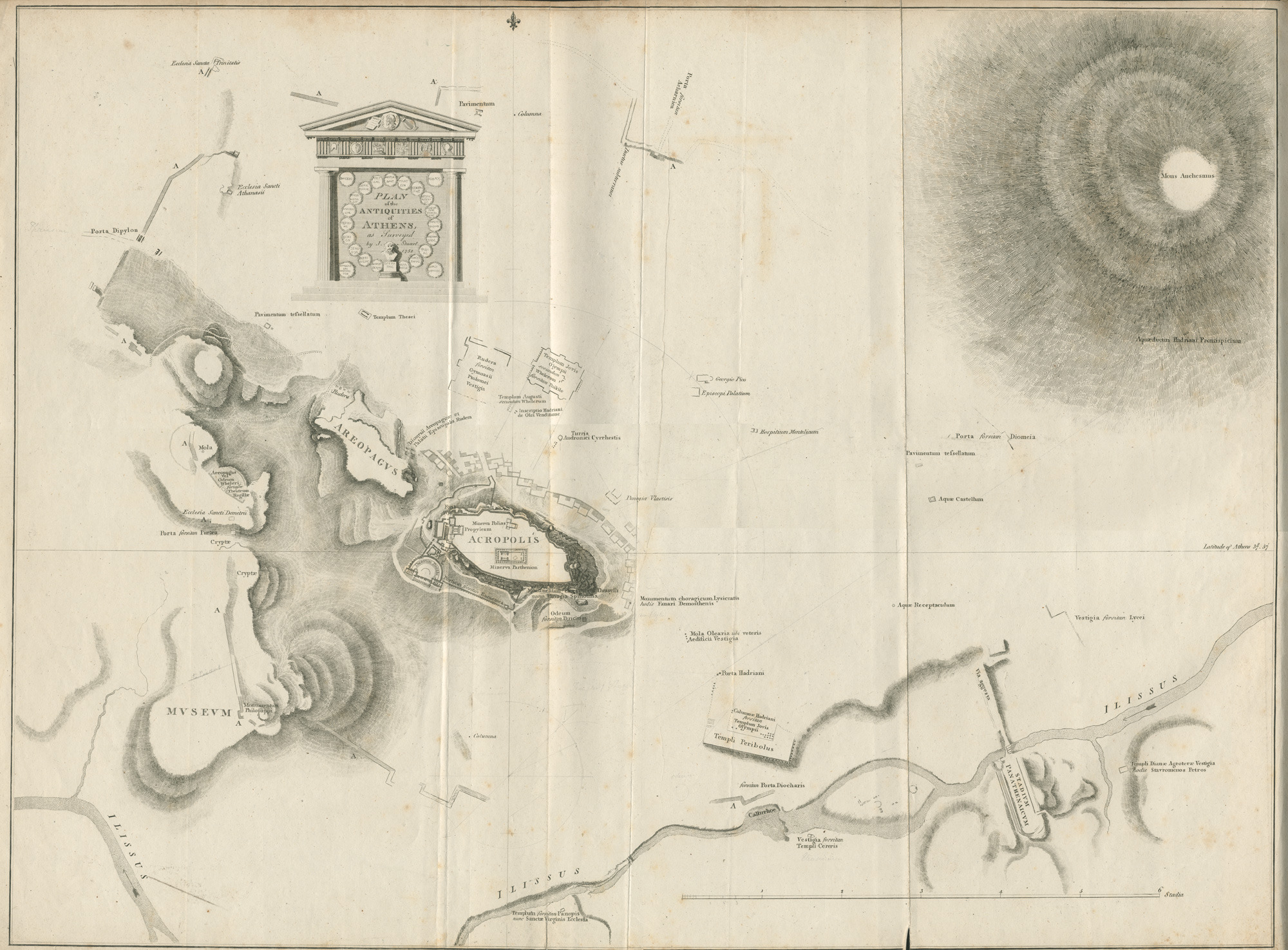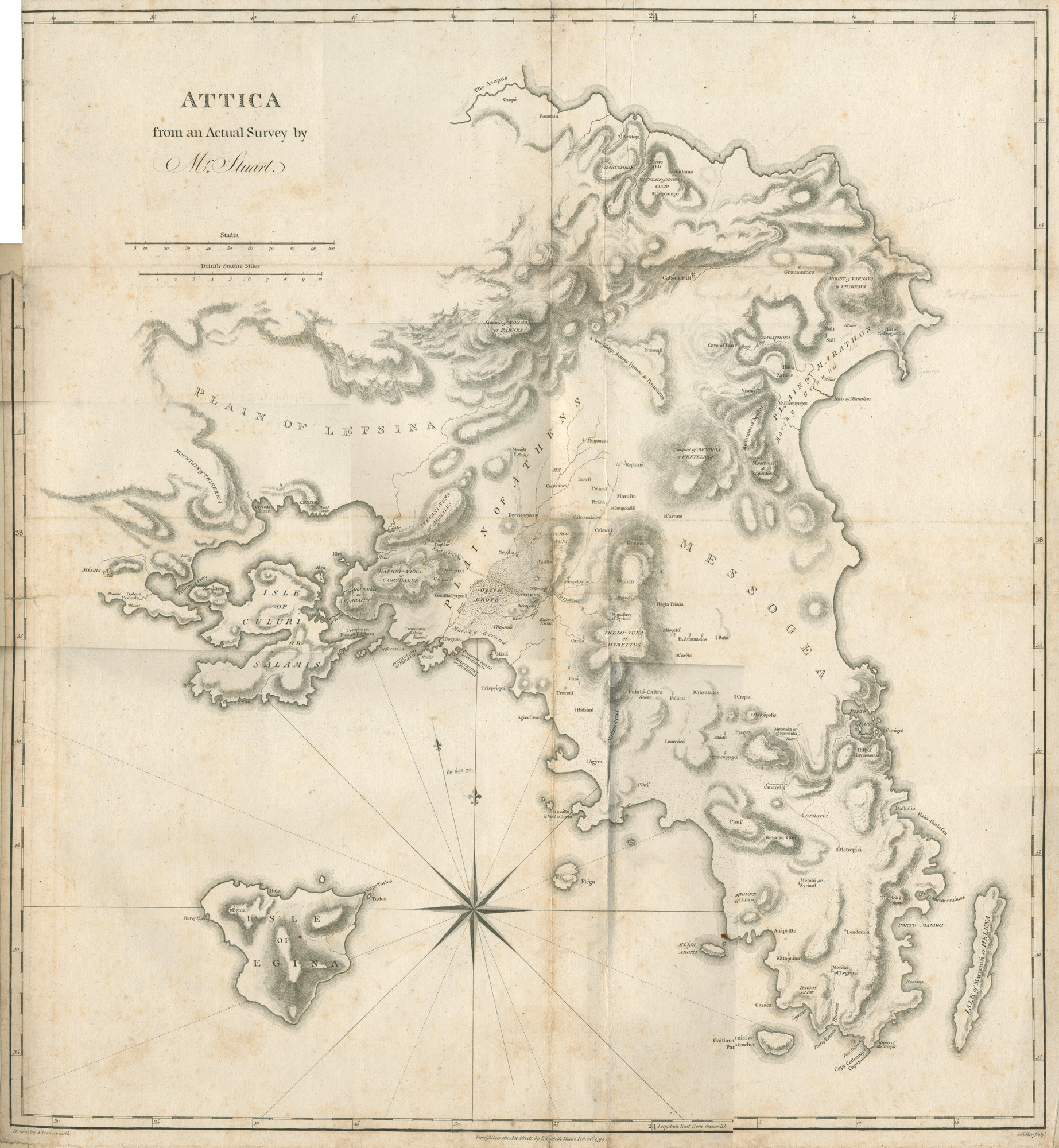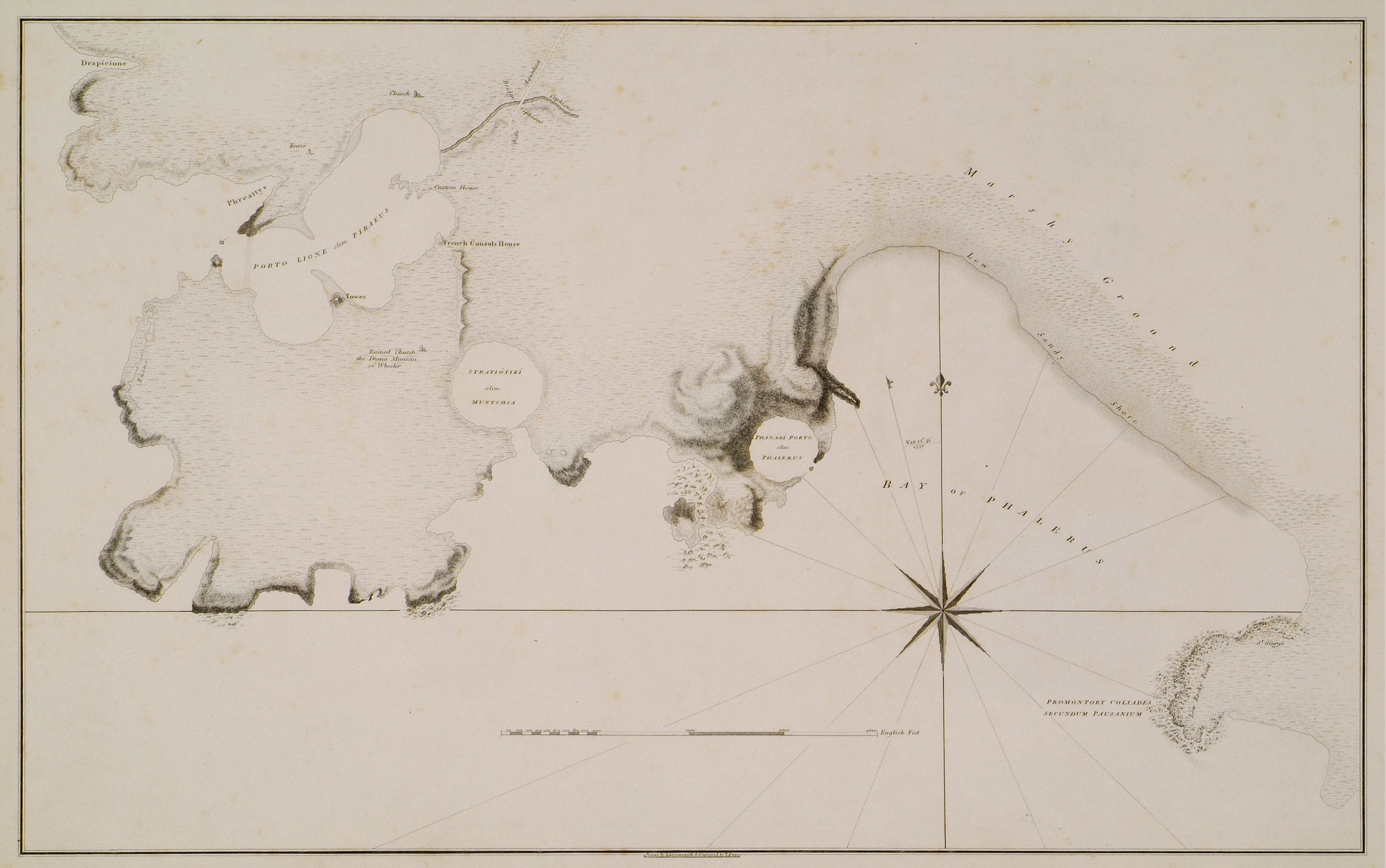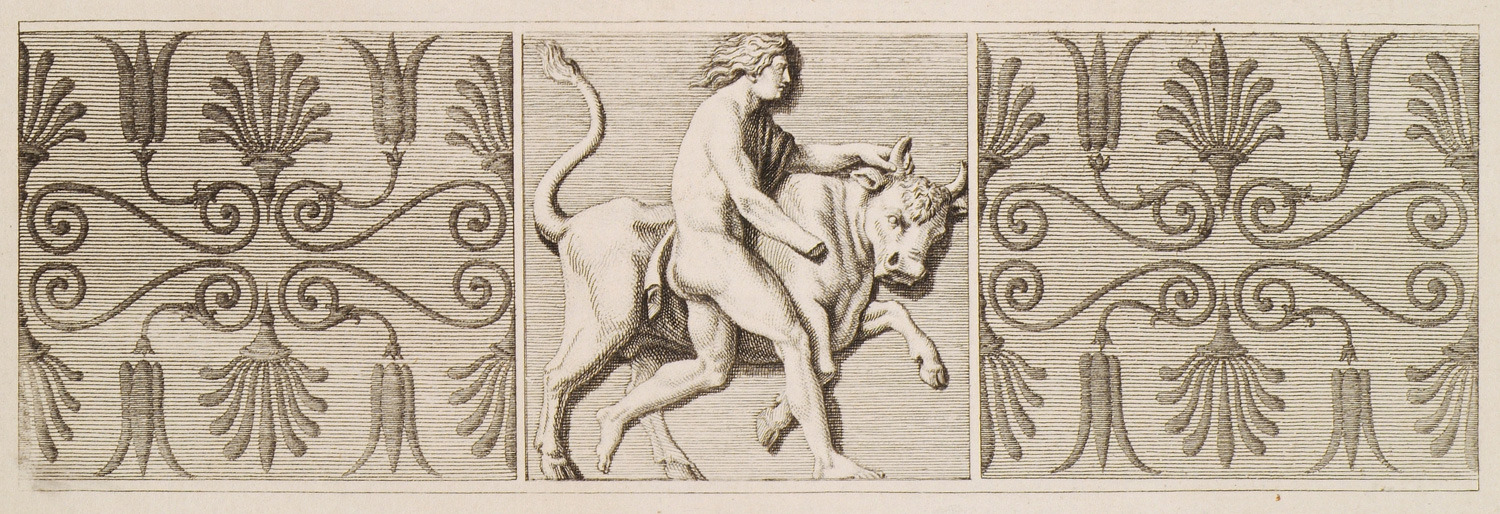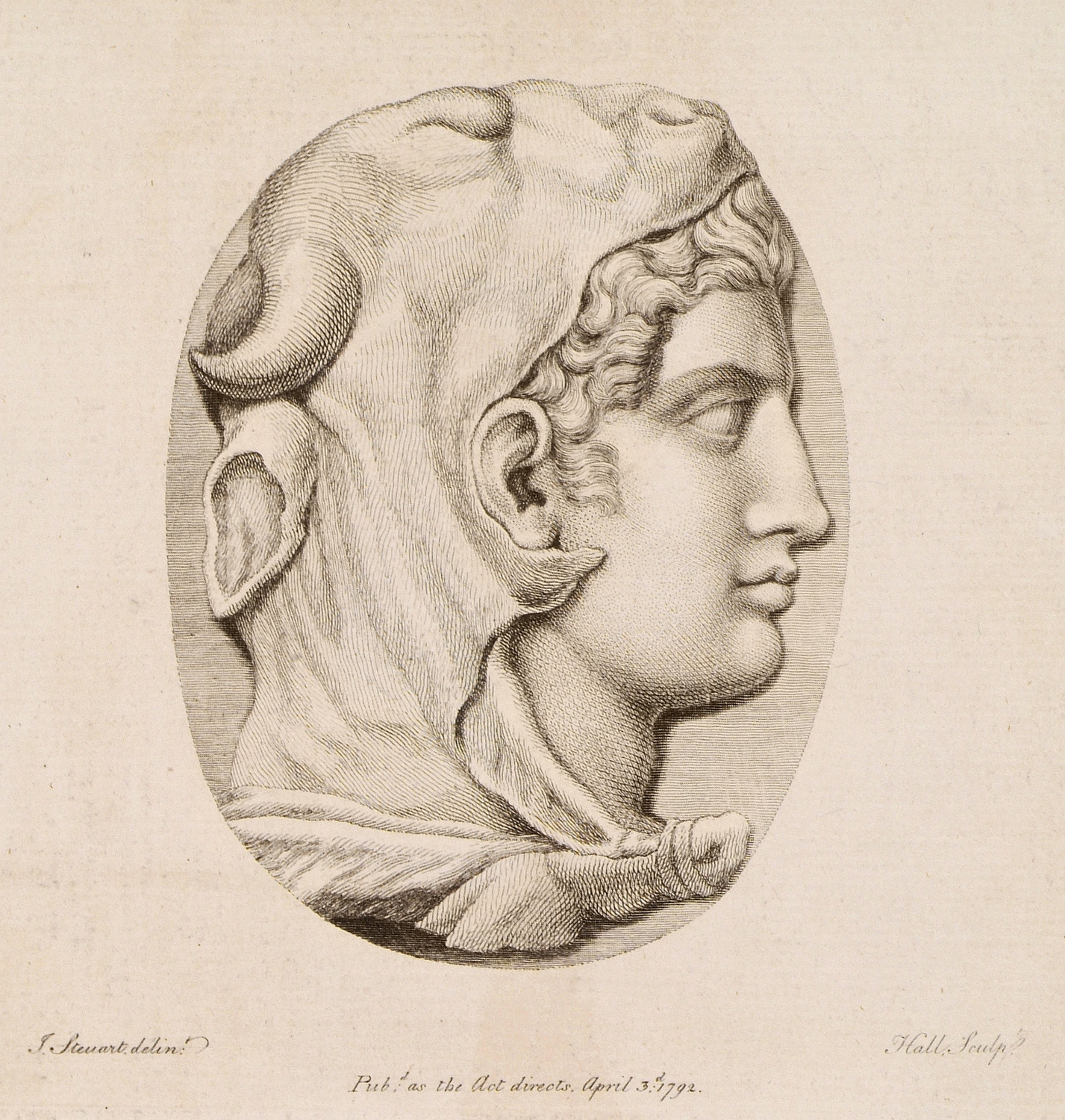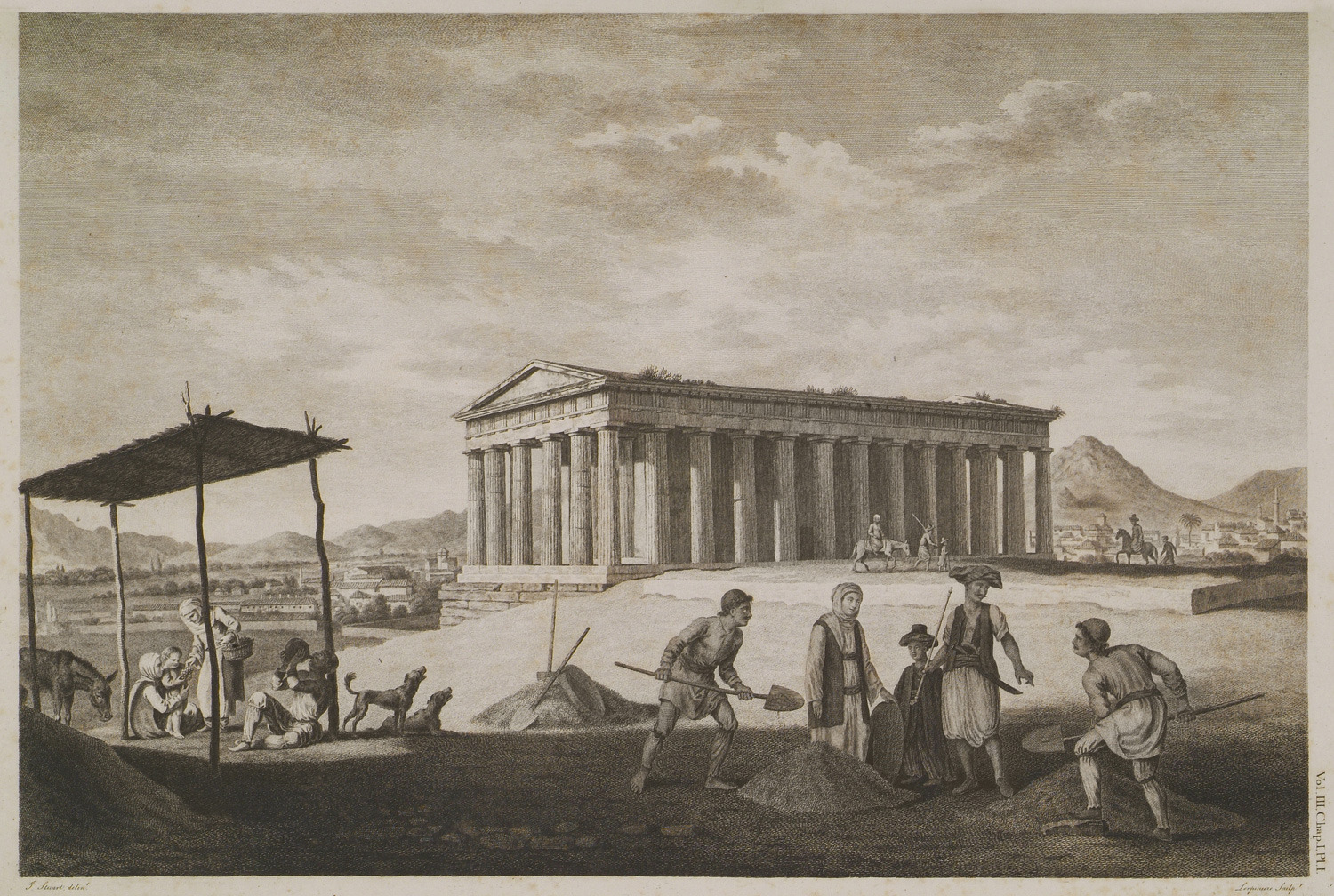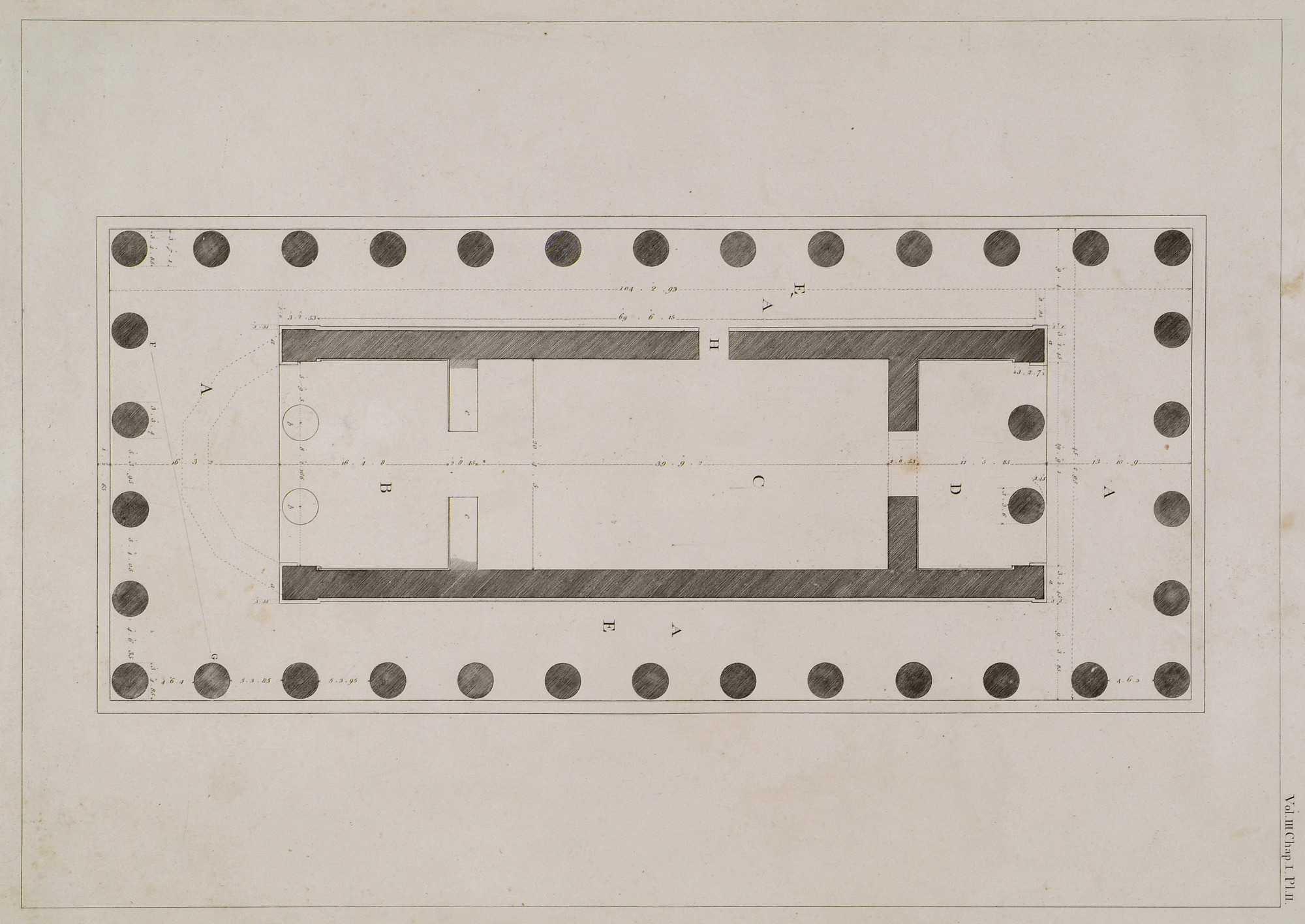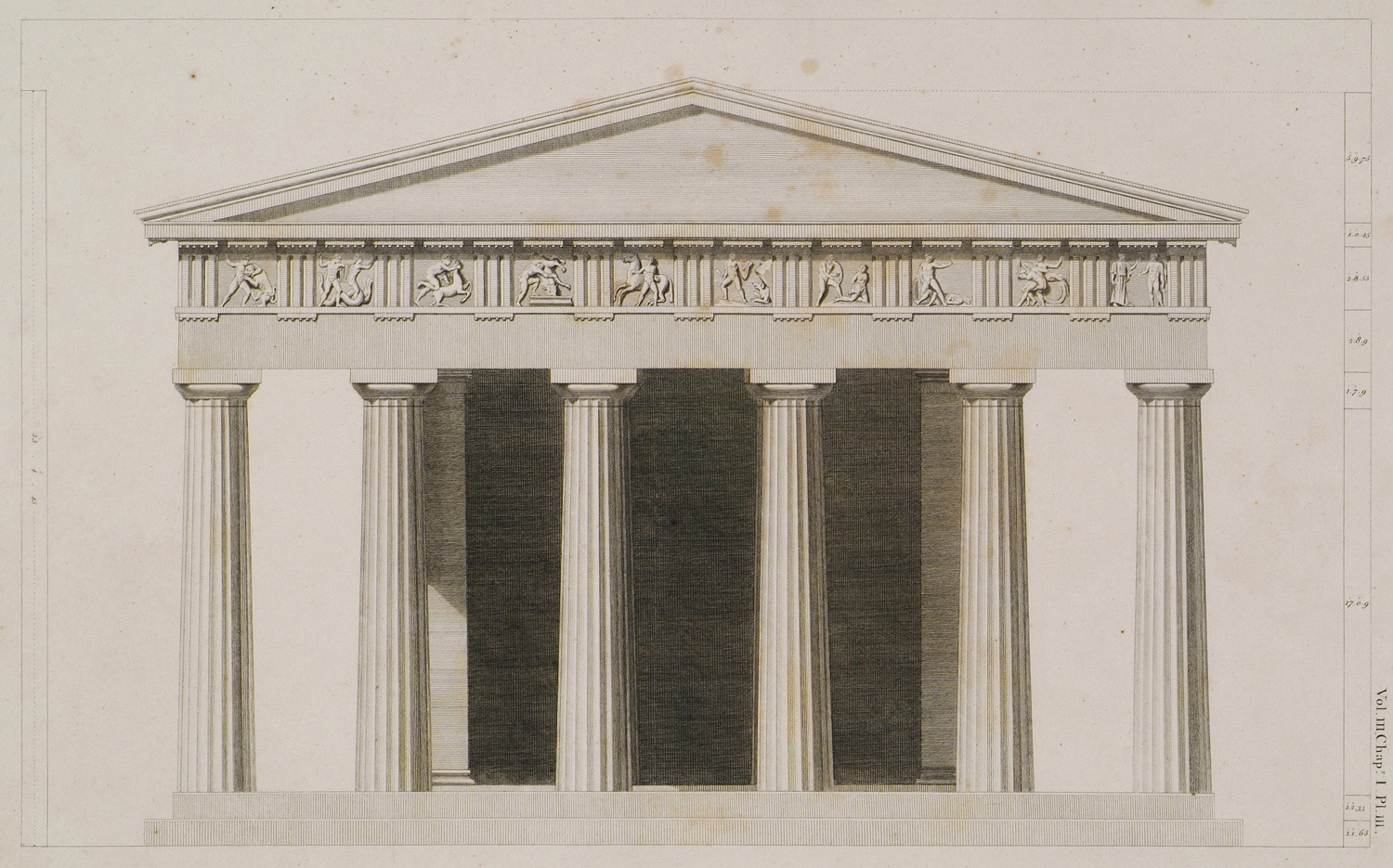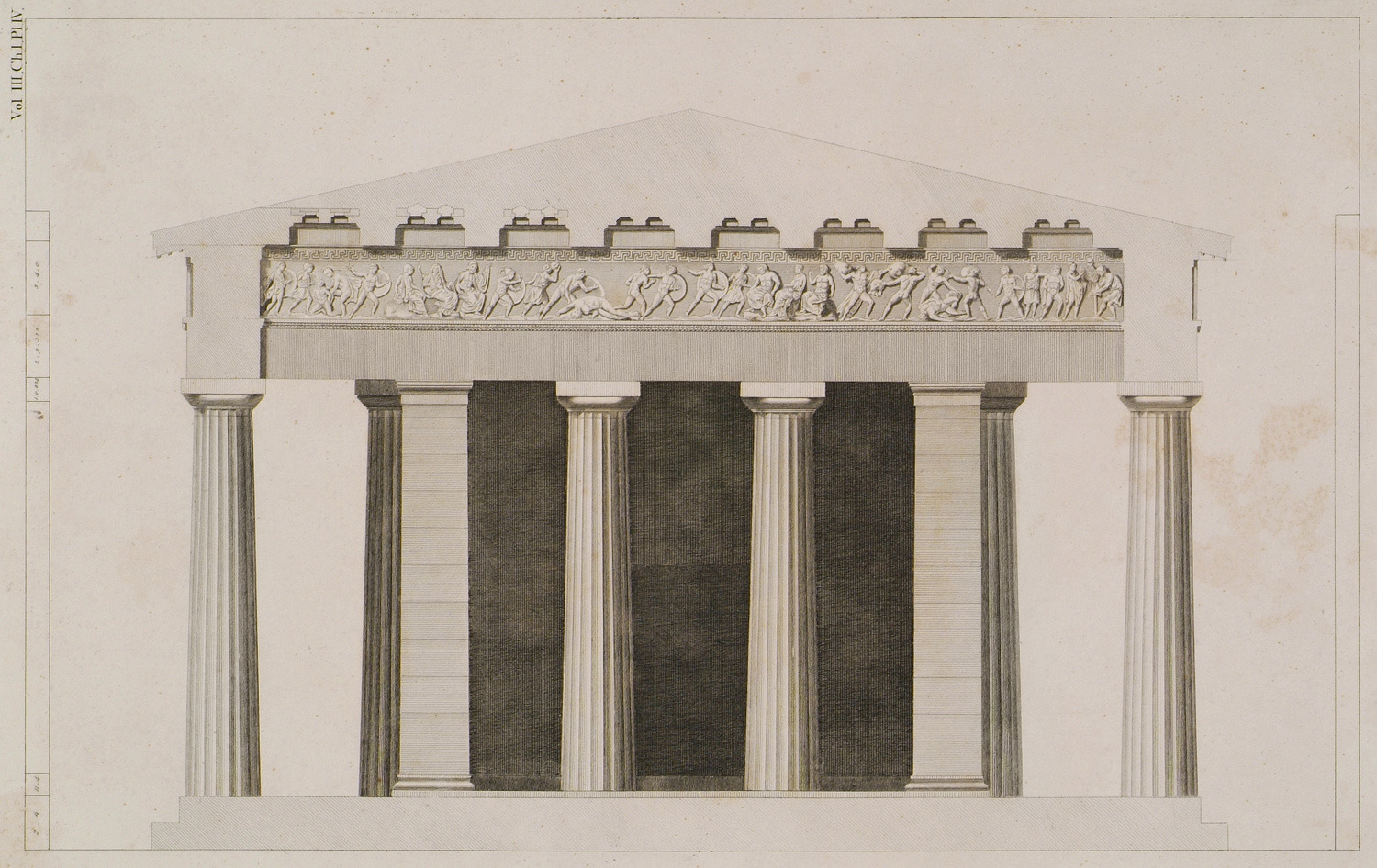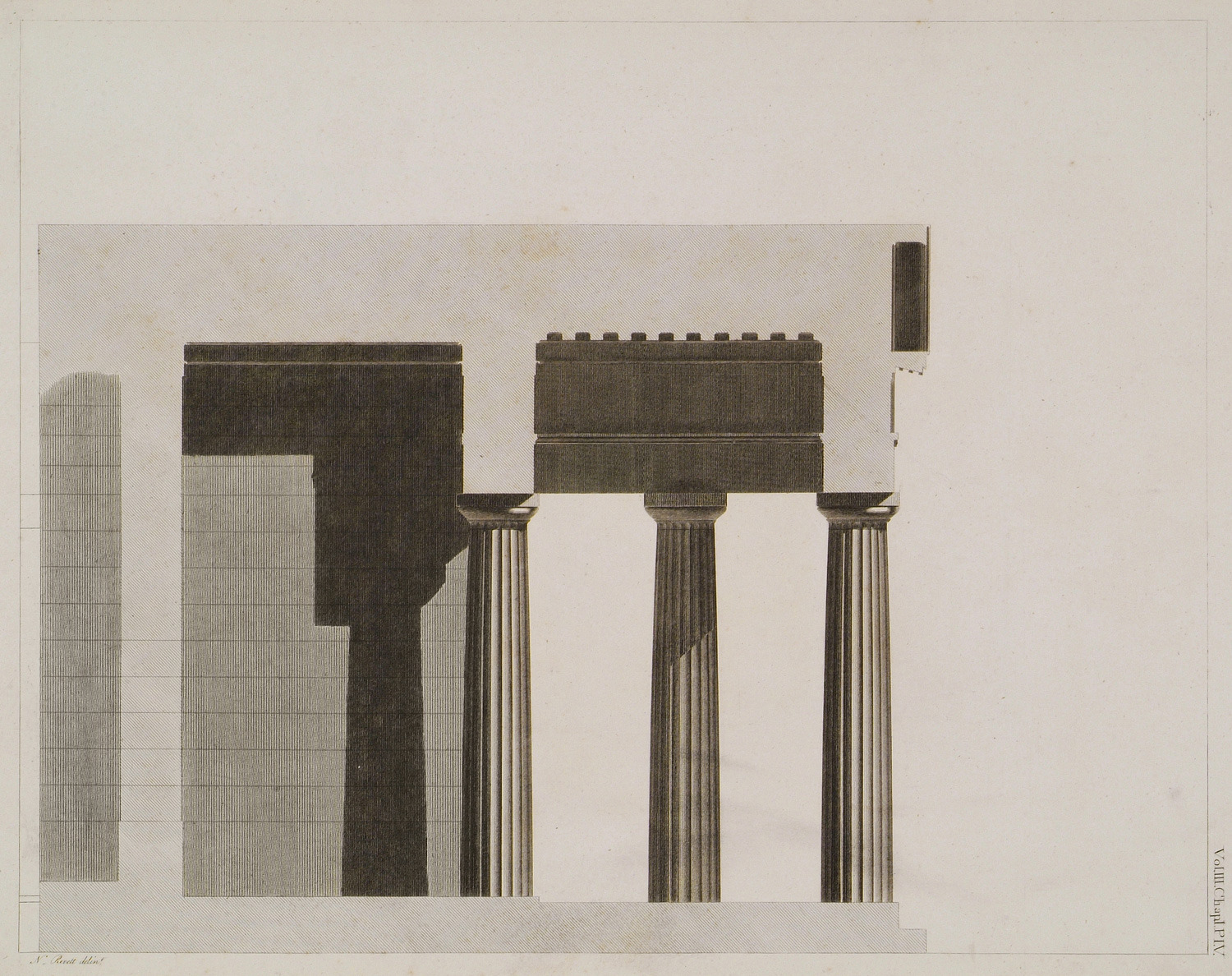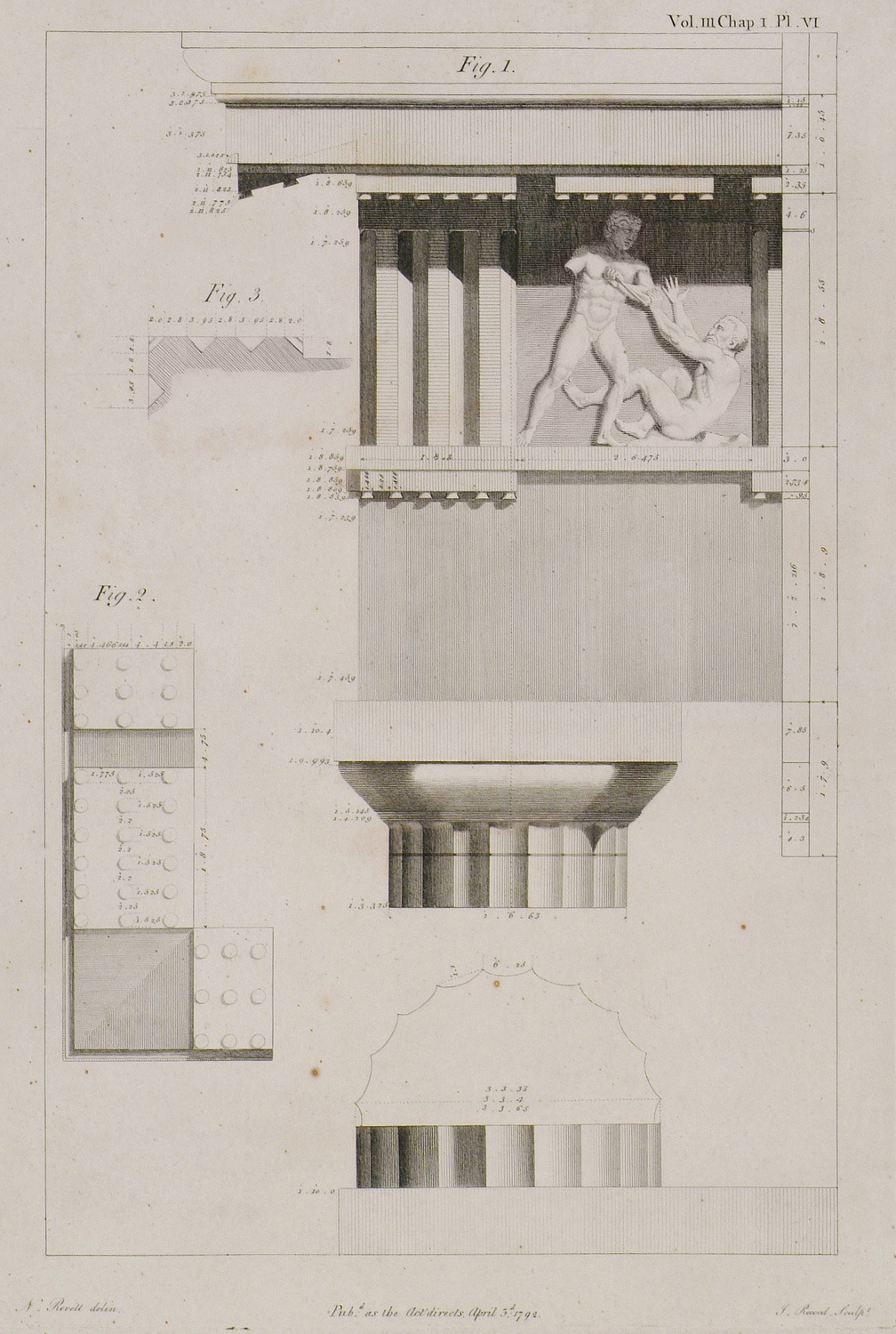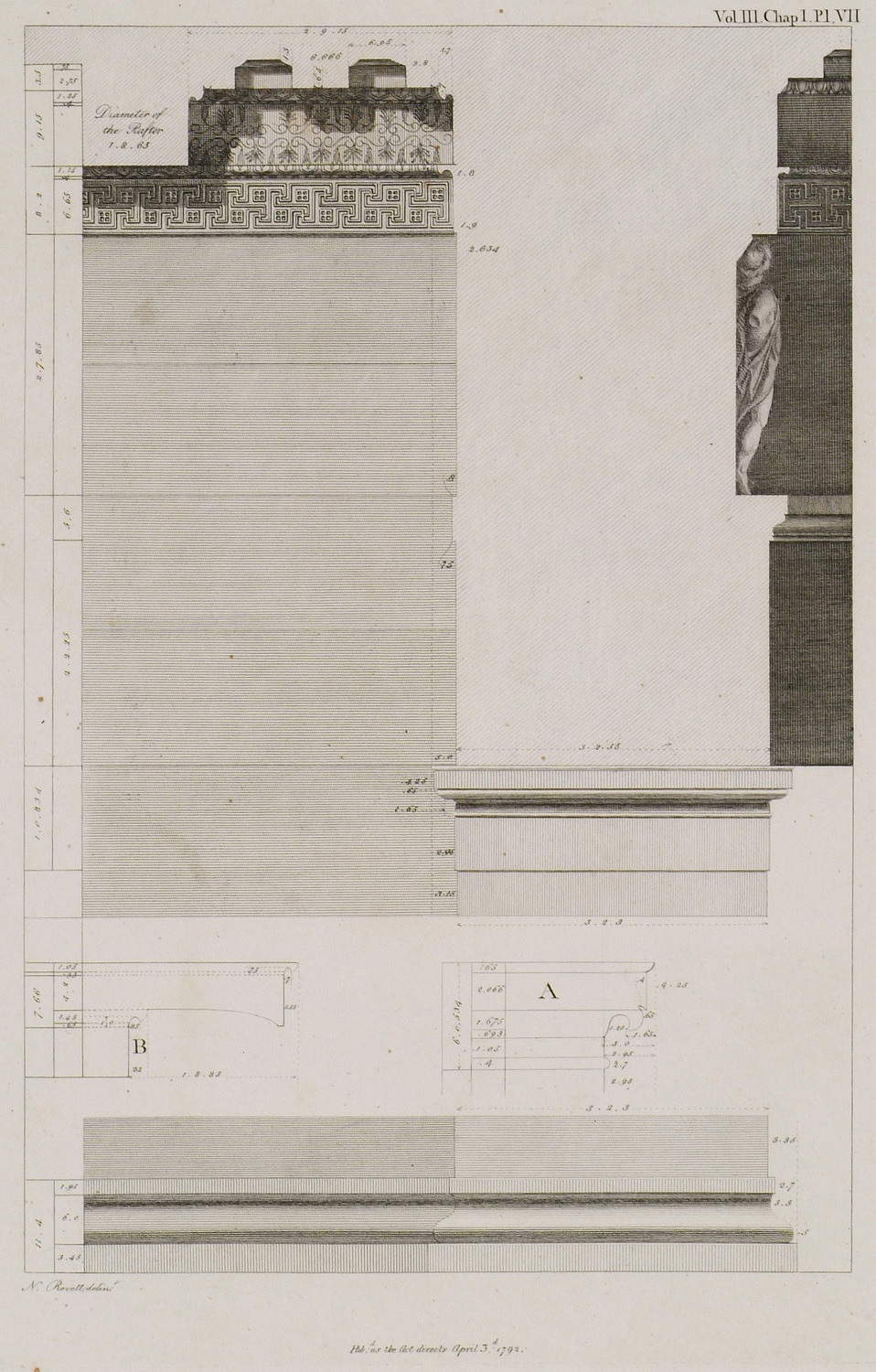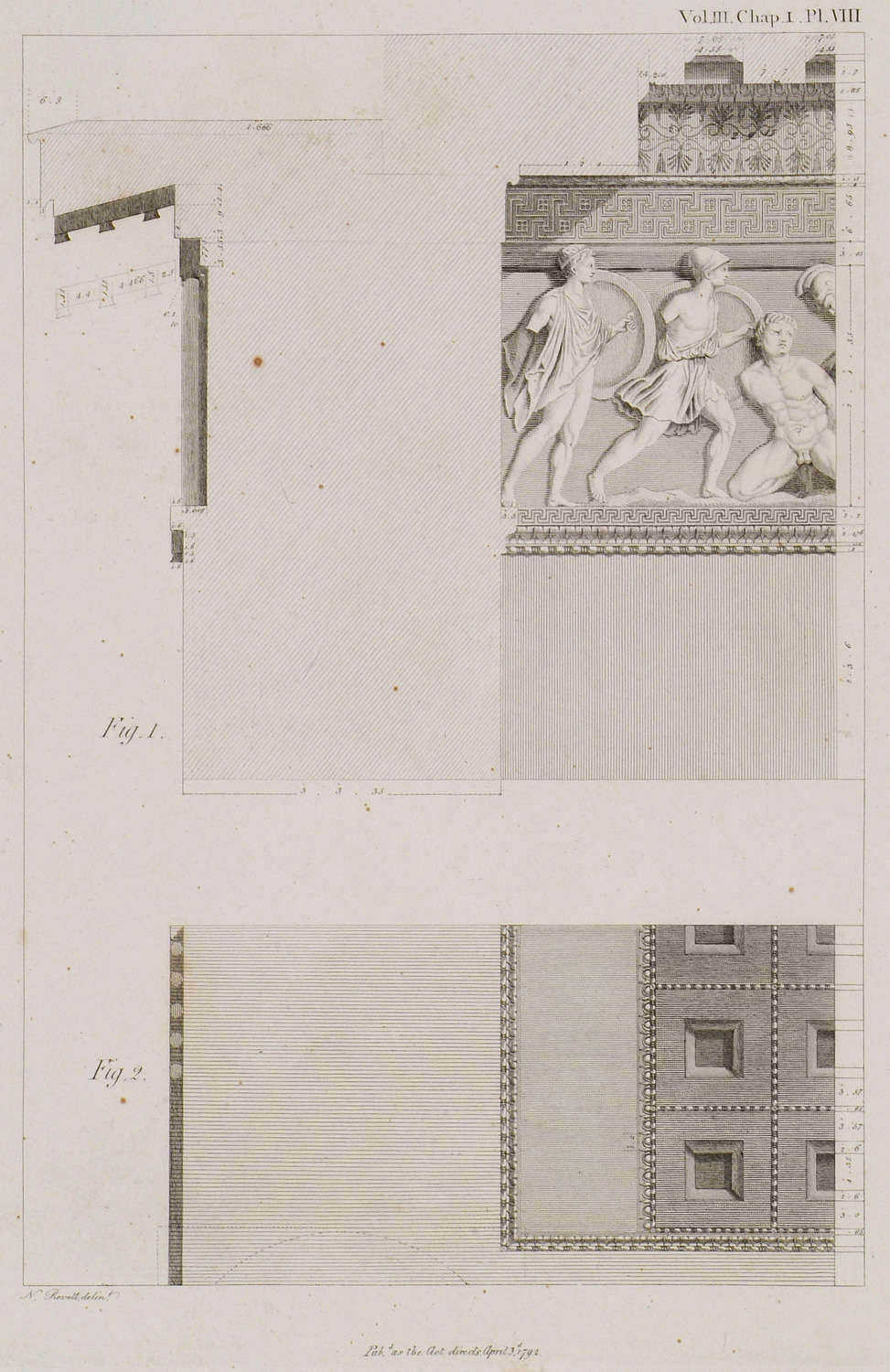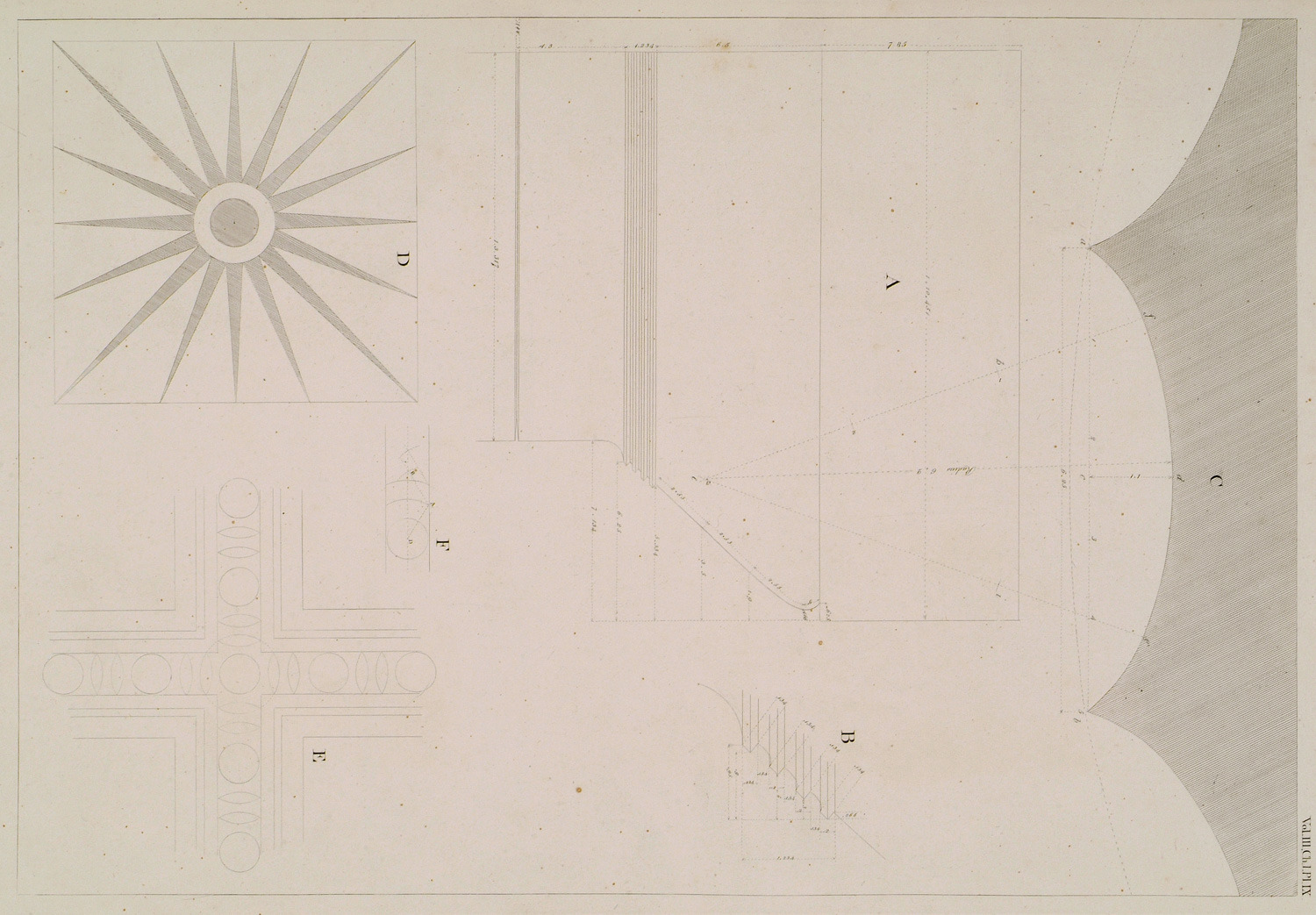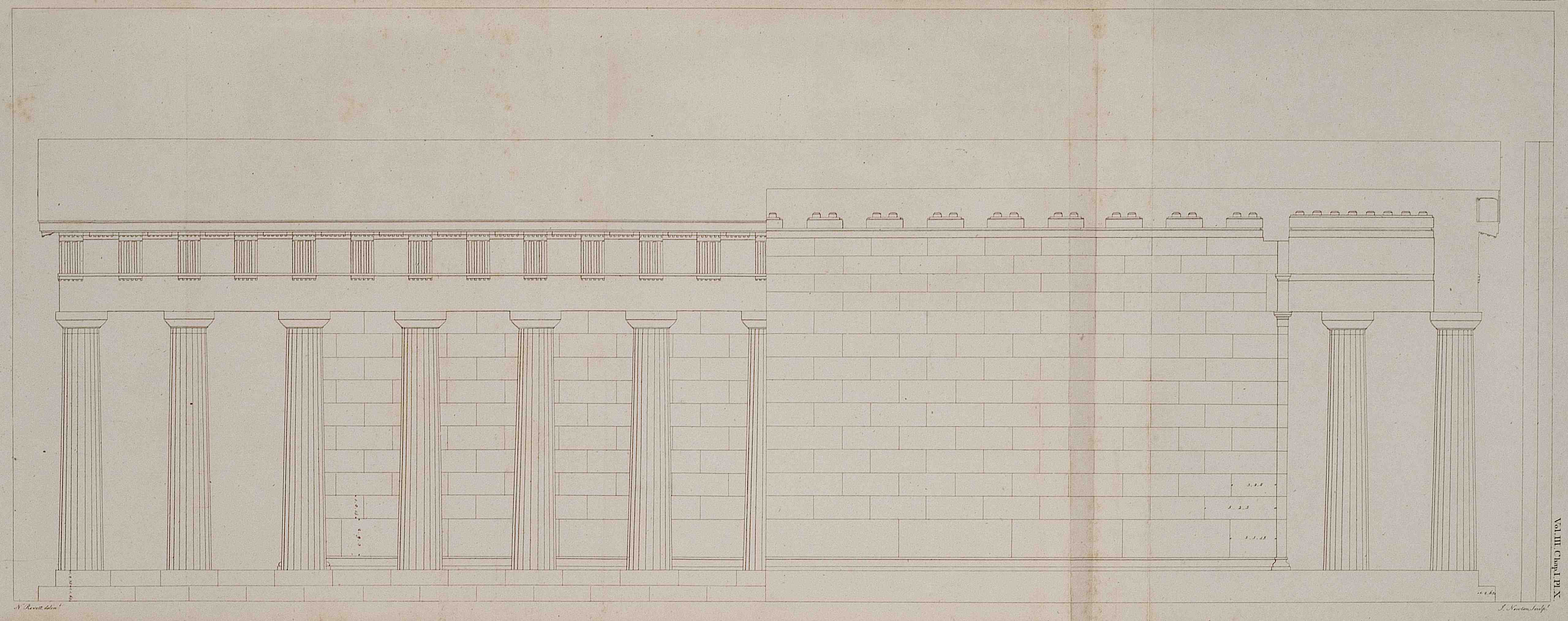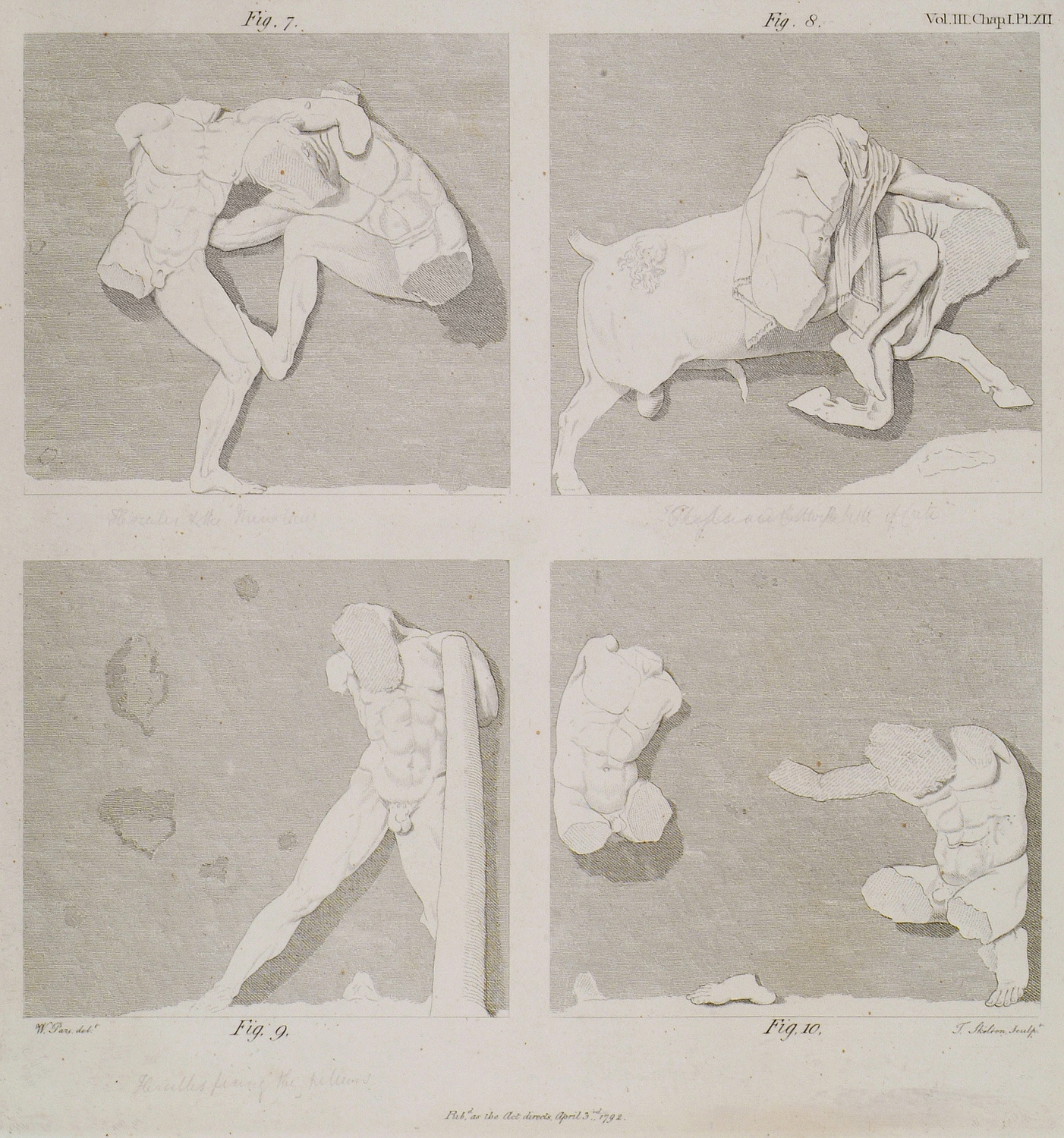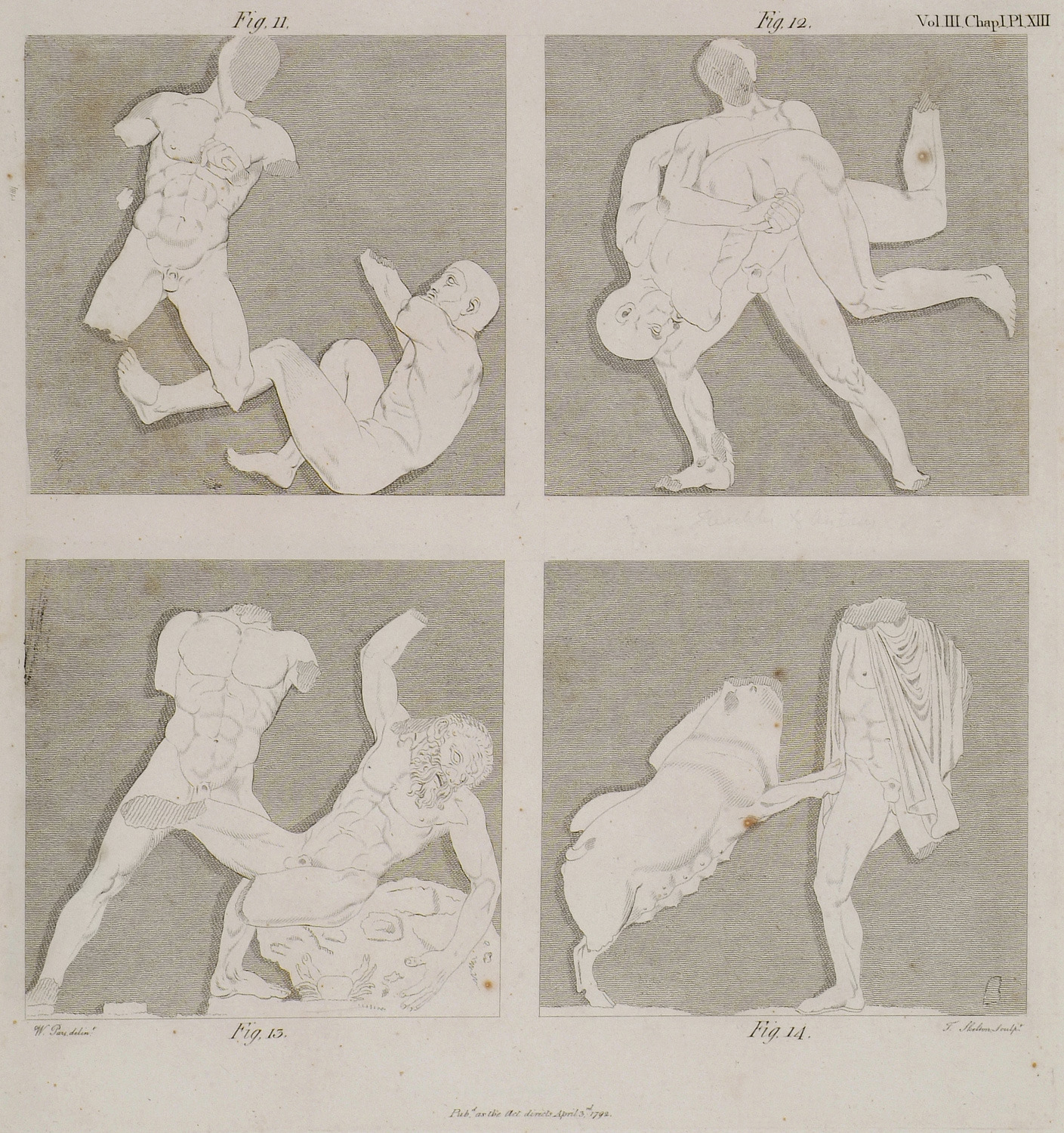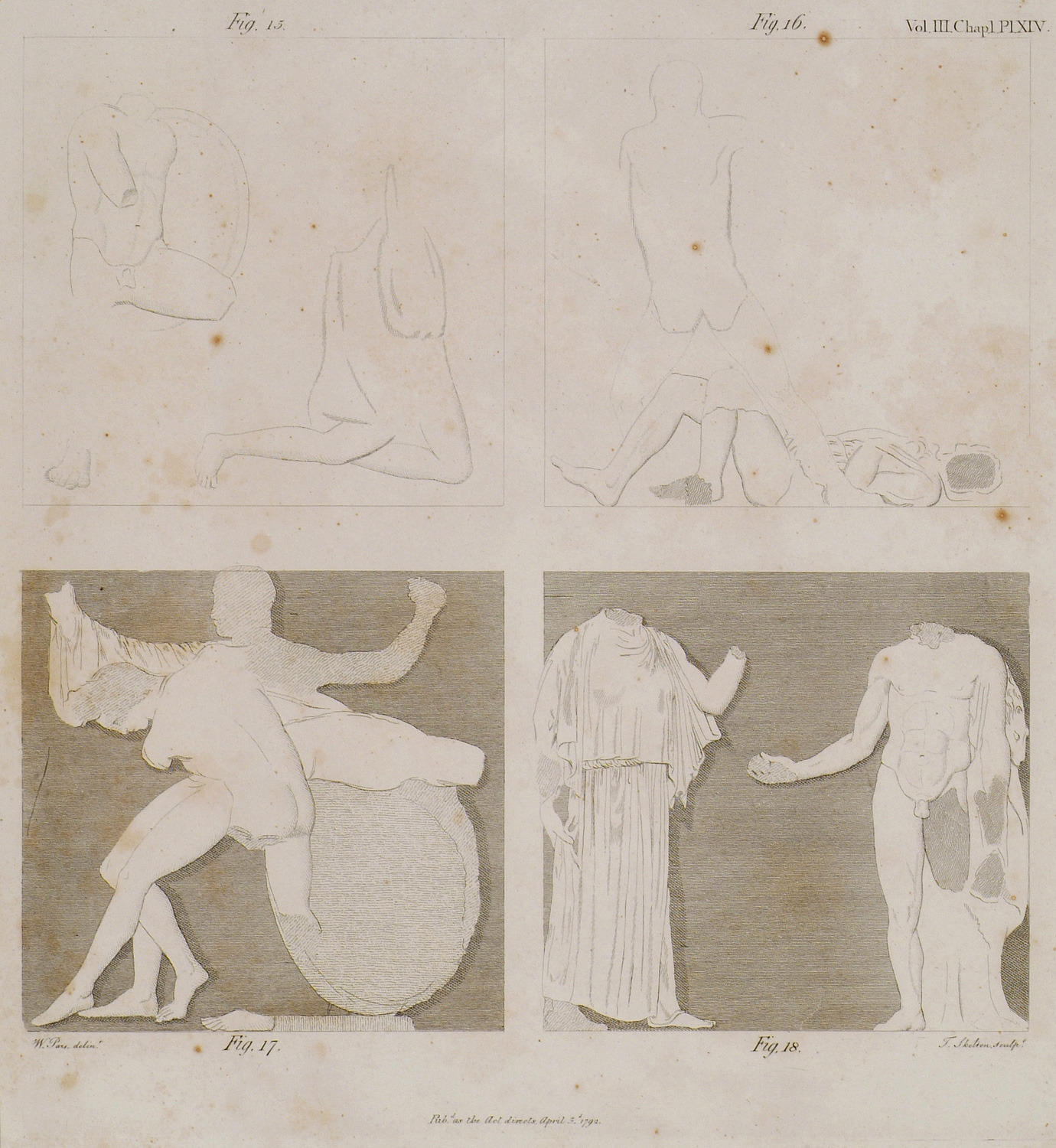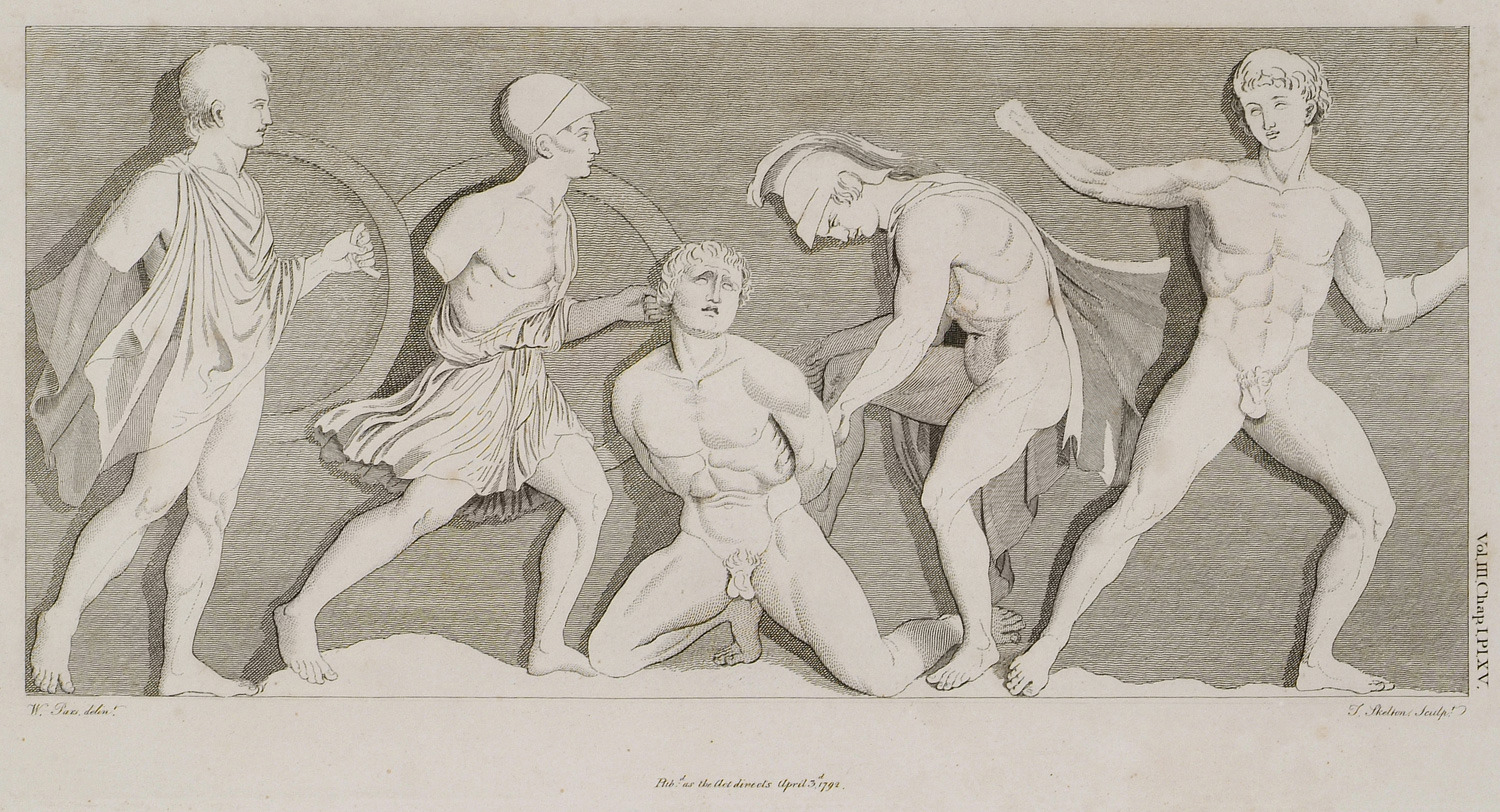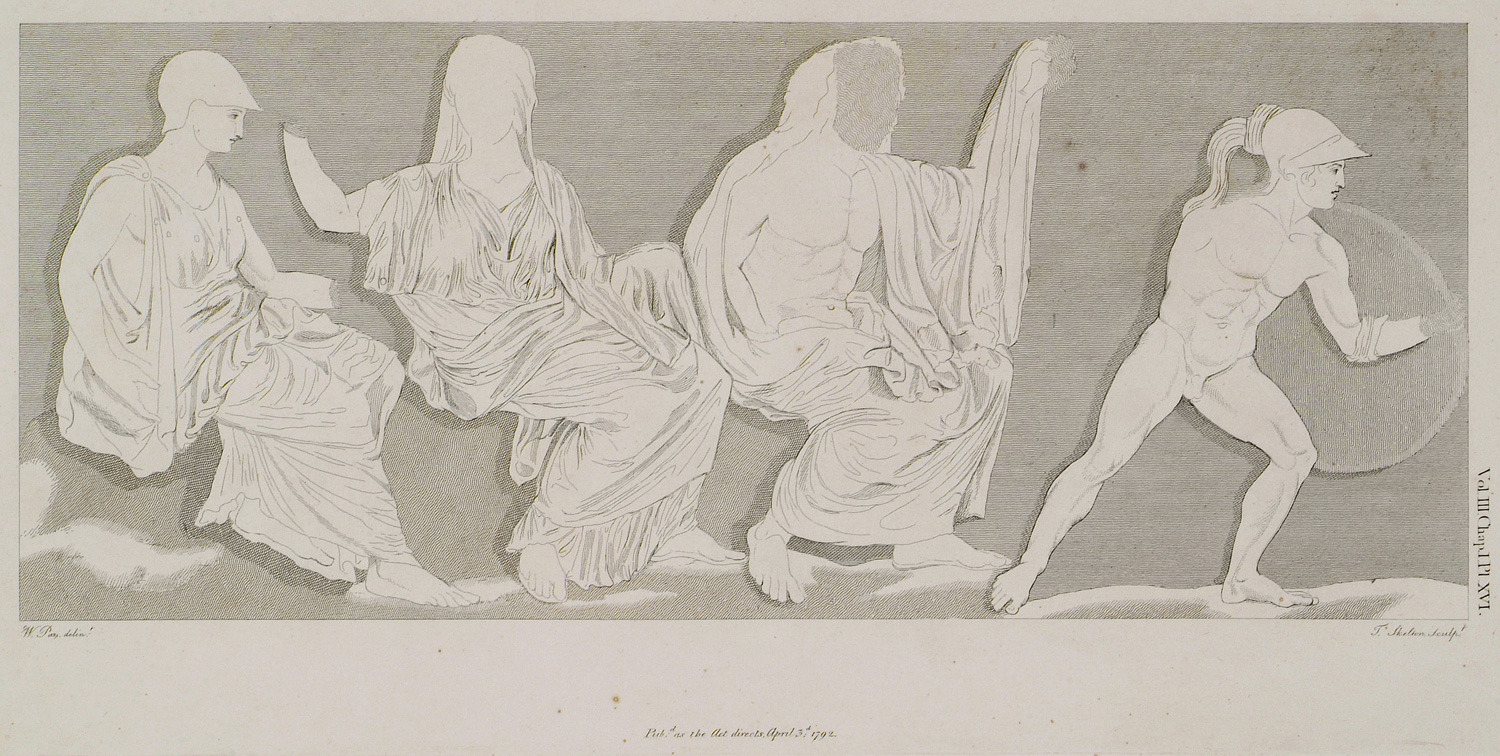Attica (1797 Subjects)
Odeon of Herodes Atticus, Athens: Elevation of the front of the scene.
Odeon of Herodes Atticus, Athens: Elevation of the back of the scene.
Odeon of Herodes Atticus, Athens: Section of the theatre through the scene.
Fig. 1: Fragments of a cornice of the Ionic order found on the hill above the seats of the Theatre of Bacchus. Fig. 2: The interior face of an architrave which is built up in a modern wall under an arch of the bridge over the Ilissus. Fig. 3: The capital of a pilaster in the wall of the bastion fronting the Propylea. Fig. 4: Attic base on the convent at Colouri. Fig. 5, 6, 7: Plan, elevation and section of an Ionic capital, probably found in the church of St. George, on Mount Anchesmus.
ig. 1, 2, 3: Quarter plan, elevation, and part of a section of a Doric capital found in a convent at Daphne. Fig. 4: Doric capital in the church of Stauromenos Petros. Fig. 5: Fragments in the metope of Mendeli. Fig. 6: Doric capital found in a ruined church, on the left hand of the road from the town of Athens, to the Turkish burial ground, facing the gate of the Acropolis. Fig. 7. Fillets of the above capital.
Panoramic view of Athens, looking towards Piraeus and Salamis, from Pnyx hill.
Title page of the third volume of the book. Antiquities from Megara.
Ionic capital and inscription from Menidi.
Relief from the Church of Panagia Krystaliotissa, Athens.
Plan of the Antiquities of Athens as surveyed by J. Stuart.
Attica from an actual survey by Mr.Stuart.
Map of the greater region of Piraeus.
Ornamental feature from the temple of Hephaestus painted in dark ochre. In the middle, Theseus riding the Marathon bull (reconstruction based on destroyed relief).
Cameo depicting Theseus.
View of the temple of Hephaestus in Athens. In the foreground, Arvanite peasants threshing corn under the supervision of a Muslim servant who is escorting his master's son. On the left, Arvanites in provisional hut (kalyvi).
Plan of the Temple of Hephaestus (Theseion), Athens.
Temple of Hephaestus (Theseion), Athens: The elevation of the eastern Front.
The Elevation of the Eastern Front: Transverse section of the eastern portico. Here the front columns are removed to shew the antae and columns of the pronaos with its frize, the distribution of the beams of the ceilings of the Lacunaria.
Temple of Hephaestus (Theseion), Athens: Longitudinal section of the eastern portico and pronaos.
Temple of Hephaestus (Theseion), Athens: Fig. 1. The capital and entablature of the columns of the portico, with the metope of the north east angle. Fig.2 The sossit of the corona, and of the mutules, with the distribution of their guttae.
Temple of Hephaestus (Theseion), Athens: The capital and base of one of the antae; section of the entablature over the columns and antae of the pronaos and porticum, and the section of the cornice of the pediment. A. Capital of the antae on a larger scale. B. Section of the cornice of the pediment.
Temple of Hephaestus (Theseion), Athens: Fig. 1. The section of the entablature and lacunaria, with the mouldings, and part of the basso relievo on the front of the pronaos. Fig. 2. The plan of the soffit and lacunaria.
Temple of Hephaestus (Theseion), Athens: A. Profile of the capital on a large scale. B. Profile of the annulets full size. C. The flutings of the column full size. D and E. The ornaments painted in the soffit of the lacunaria. F. The manner of describing the ornament marked E.
Temple of Hephaestus (Theseion), Athens: Half the flank, and half the longitudinal section of the temple.
Temple of Hephaestus (Theseion), Athens: Six of the metopes in the Eastern front. Fig. 1. Hercules and the Nemean lion. Fig.2. Hercules and Iolaus destroying the hydra. 3. Hercules and the Ceryneian Hind. Fig. 4. Hercules and the Erymanthian Boar. Fig. 5. Hercules with the horse of Diomedes. Fig. 6. Hercules with Cerberus.
Temple of Hephaestus (Theseion), Athens: Four of the metopes on the South side; Fig. 7 being that in the Eastern angle, the rest follow in their proper order. Fig. 7 Theseus destroying the Minotaur Fig. 8 Theseus with the bull of Marathon Fig. 9 and Fig.10 These, as well as those which follon, of which no descriptions are given, is too much ruined to discover what the subjects are. [Theseus kills Periphetes and Sinis Pityocamptes].
Temple of Hephaestus (Theseion), Athens: Four of the metopes on the north side; Fig. 11, 12, 13. Theseus overcoming Skiron, Cercyon and Procrustes (b). Fig. 14. Theseus killing the Crommian sow.
Temple of Hephaestus (Theseion), Athens: Four of the metopes in the eastern front, succeeding in proper order those in Plate 10, that numbered 18 being in the northern angle. Fig. 15 Ruined basso relievo. Fig. 16: Hercules with the girdle of Hippolita. Fig. 17, Fig. 18 Hercules taking the golden apples from the garden of the Hesperides.
Temple of Hephaestus (Theseion), Athens: The sculpture in the frieze of the pronaos. Combat of Theseus and the Pallantides.
Temple of Hephaestus (Theseion), Athens: The sculpture in the frieze of the pronaos. Combat of Theseus and the Pallantides.


